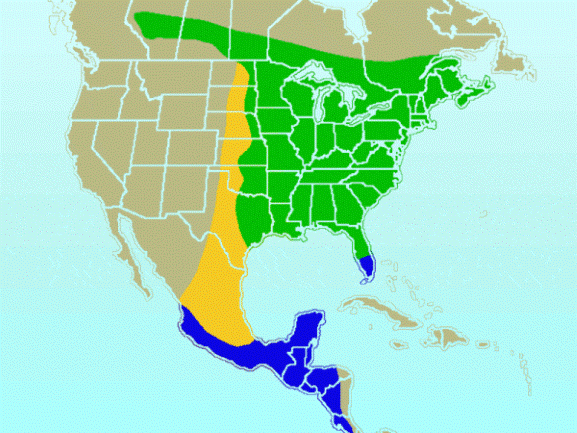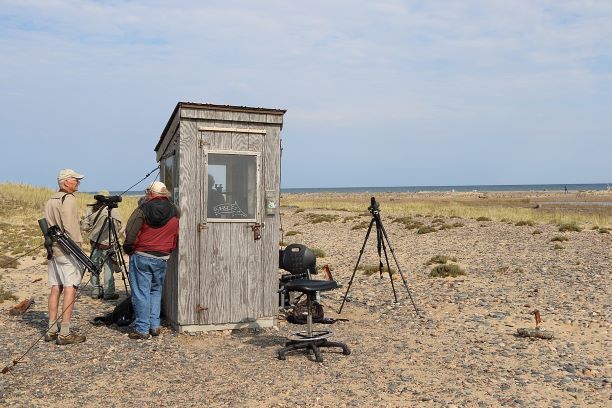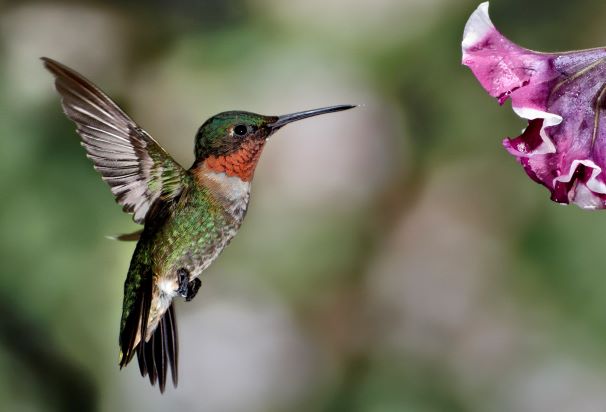I saw a hummingbird yesterday hovering around a wildflower. He was so small, I thought he was an insect at first. Then I saw his red throat and his beak, and I realized that he was a bird.
It didn’t take too much research to discover that it was a male ruby-throated hummingbird. The identification was actually quite easy. First, because the bird had a ruby-colored throat. Second, because this is about the only type of hummingbird one sees in the eastern half of North America. For some reason, probably related to climate, there are a wide variety of hummingbirds in the western half of the continent. In the east, however, all hummingbirds are either ruby-throated or are lost.
With this sighting, I thought it time to hang up the hummingbird feeders. We had three of them in the basement, and we cleaned them up and got them ready to hang.
I had to go online to get the recipe for the hummingbird’s favorite solution. I don’t know why I couldn’t remember it, because it is quite simple – four parts water and one part sugar.
Hummingbirds are attracted to red. The color confuses them into thinking the feeder is a flower. But there is enough red in the feeders and the solution does not have to be red. Sugar and water is good enough to quench their thirst and give them a boost of energy.

The hummingbirds we see around the Great Lakes spend their winters in southern Mexico and Central America, or maybe in the Caribbean Islands. Yes, that’s right. These 3 ½ inch birds travel to the tropics in the winter and to the northern U.S. and Canada in the summer, and back again. They typically arrive in Michigan in May and leave in September. This is the same schedule followed by most of Michigan’s senior citizens.
They don’t take the long way around the Gulf of Mexico. They are smart enough, and strong enough, to take the shortest way across the gulf. At their normal flight speed of 25-30 miles per hour, it is about an 18-20 hour trip. This is another parallel to our senior citizens, who typically drive on the Interstate Highway at around 30 miles per hour.

I’ve watched large hawks and eagles in migration who were afraid to traverse large bodies of water. At Whitefish Point in Spring, for example, they circle around and around, and try to gather height through the thermals. They can see Canada across Whitefish Bay on the horizon, and they try to get enough height and strength to make it across.
What they are really trying to do is to gain enough courage to make the trip. Some of them get the height and the confidence to attempt the crossing. Others do not. They either decide to make a home south of Lake Superior, or else hug the coastline to find an easier crossing.
I’m told that these raptors will not cross any body of water if they are unable to see the opposite coast. You would never see an eagle flying across the Gulf of Mexico. An eagle heading to Central America will hug the gulf coast, rather than traveling across the water.
Keep in mind that a red-tail hawk is a 2 to 4 pound bird with a 4 foot wing span or more. A golden eagle can weigh up to 15 pounds, with a 7 foot wing span. Bald eagles use their wing spans and their knowledge of thermals to gain elevation up to 10,000 feet.
While these monstrous birds would never brave a trip across the Gulf of Mexico, a 3 ½ inch hummingbird doesn’t hesitate at all!
Further proof that size doesn’t matter!
The Hummingbird Suffix:
In my journey through the internet world of hummingbirds, I discovered a number of websites of similar names – the principal distinction being the suffix.
There used to be a lot of information about hummingbirds at hummingbirds.net. At least there was when I originally posted this in 2005. When I tried to go back there in 2019, I got all kinds of funky and scary messages. I do not recommend that you try this site at all.
Another site, hummingbird.com has nothing to do with birds. This is the website of a fish finding company.
The former site of The Hummingbird Society is hummingbird.org, but that site now belongs to a credit counseling company. The Society’s address is now hummingbirdsociety.org.
There used to be a www.hummingbird.ru, which was obviously a Russian website. The text is entirely in Russian (when I looked at it in 2005), so at first I hadn’t a clue what it was about. But it had a link to an information management company, so it too has nothing to do with birds. When I revisited this link in 2019, it took me to a site for “OpenText Connectivity products, formerly Hummingbird”. Open Text does whatever it does, but it doesn’t have anything to do with hummingbirds.
I wonder if there is a hummingbird.edu?
